U.S. stocks edge higher; solid earnings season continues
Introduction & Market Context
Puma Biotechnology (NASDAQ:PBYI) presented its Q1 2025 earnings call on May 8, 2025, highlighting the commercial performance of its flagship product NERLYNX. Despite missing analyst expectations with revenue of $46 million against a forecasted $47.5 million, the company’s stock rose 4.23% in after-hours trading to $3.20, suggesting investors found positive elements in the presentation.
The $151 million market cap biotech company continues to focus on expanding NERLYNX’s global footprint while optimizing patient dosing strategies to improve adherence. The presentation offered insights into both the challenges and opportunities facing Puma (OTC:PMMAF) as it navigates competitive pressures in the oncology treatment landscape.
Quarterly Performance Highlights
Puma reported NERLYNX net revenue of $43.1 million for Q1 2025, representing a 7% increase compared to Q1 2024 ($40.3 million). However, this figure reflects a significant 21% decrease from Q4 2024 ($54.4 million). The quarterly performance was notably impacted by inventory changes, with a negative $4.7 million inventory adjustment in Q1 2025.
As shown in the following chart of quarterly NERLYNX revenue:
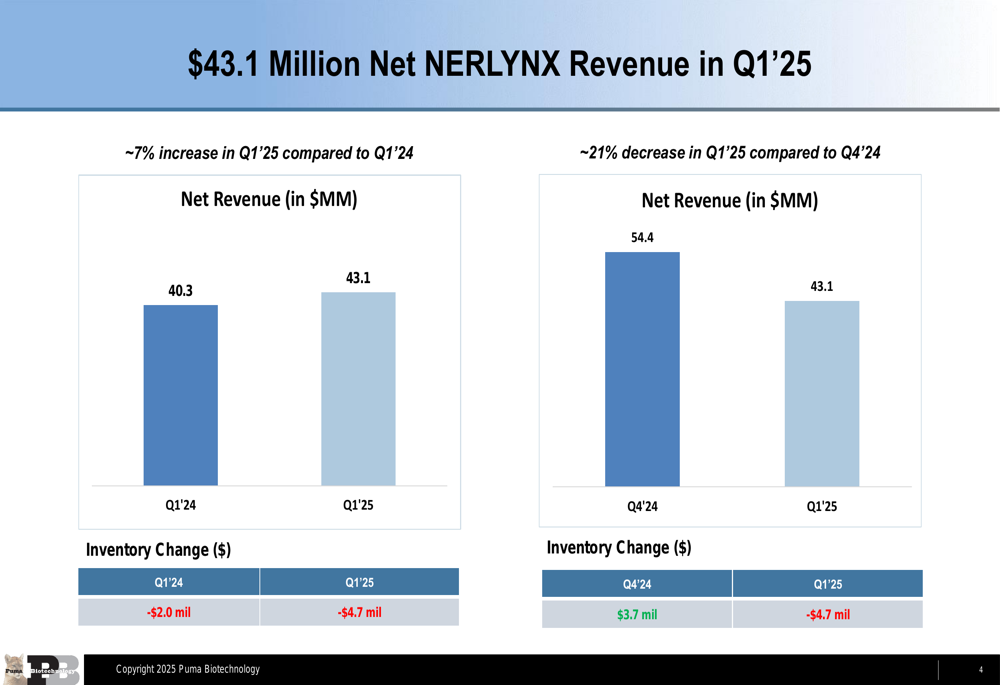
The company’s product volume metrics showed similar trends. Puma sold 2,338 ex-factory bottles in Q1 2025, representing a 3% decrease from Q1 2024 (2,410 bottles) and a 21% decrease from Q4 2024 (2,964 bottles). These figures were also affected by inventory changes, with a negative 251-bottle inventory adjustment in Q1 2025.
The following chart illustrates the ex-factory bottle sales trends:
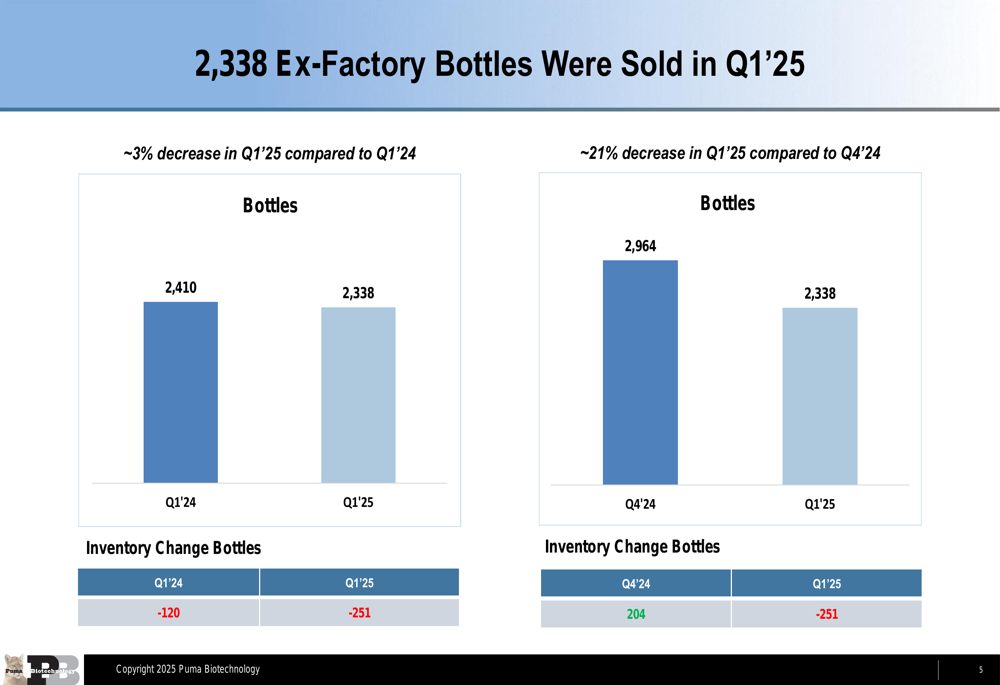
These results align with the company’s earnings report, which showed total revenue of $46 million, suggesting approximately $2.9 million came from sources beyond NERLYNX product sales. With cash and equivalents of $93 million as of March 31, 2025, Puma maintains a stable financial position despite the quarterly revenue decline.
Strategic Initiatives
Patient Dosing Optimization
A key focus of Puma’s commercial strategy has been optimizing the dosing regimen for NERLYNX. The presentation highlighted a significant trend toward reduced initial dosing, with approximately 72% of patients in Q1 2025 starting at a reduced dose (defined as fewer than 6 pills per day). This represents a dramatic increase from earlier periods when reduced dosing was rare.
The following chart demonstrates this long-term trend toward reduced initial dosing:
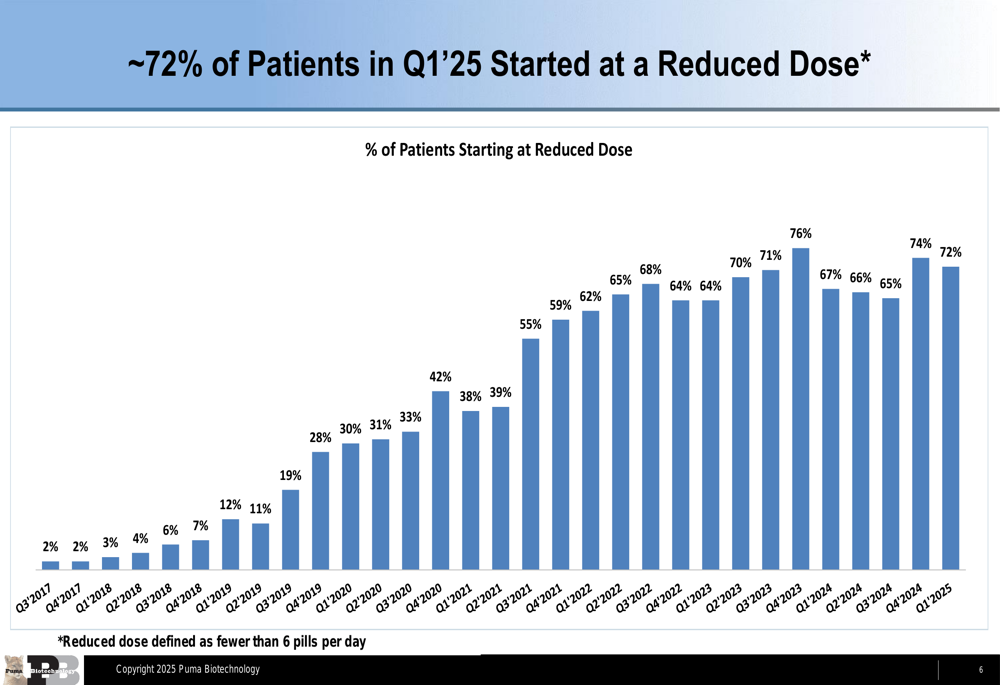
This strategy appears aimed at improving tolerability and patient adherence, potentially addressing side effect concerns that could limit NERLYNX adoption. During the earnings call, company executives emphasized efforts to increase NERLYNX utilization among patients at risk of recurrence, suggesting this dosing approach is part of a broader market penetration strategy.
Global Expansion
Puma continues to execute its global expansion strategy through regional partnerships. The company has established a comprehensive network of distribution agreements spanning multiple regions including Australia/Southeast Asia, Israel, Canada, Latin America, Europe, Greater China, the Middle East, Africa, South Korea, and Russia/CIS.
The following chart details Puma’s international partnership timelines:
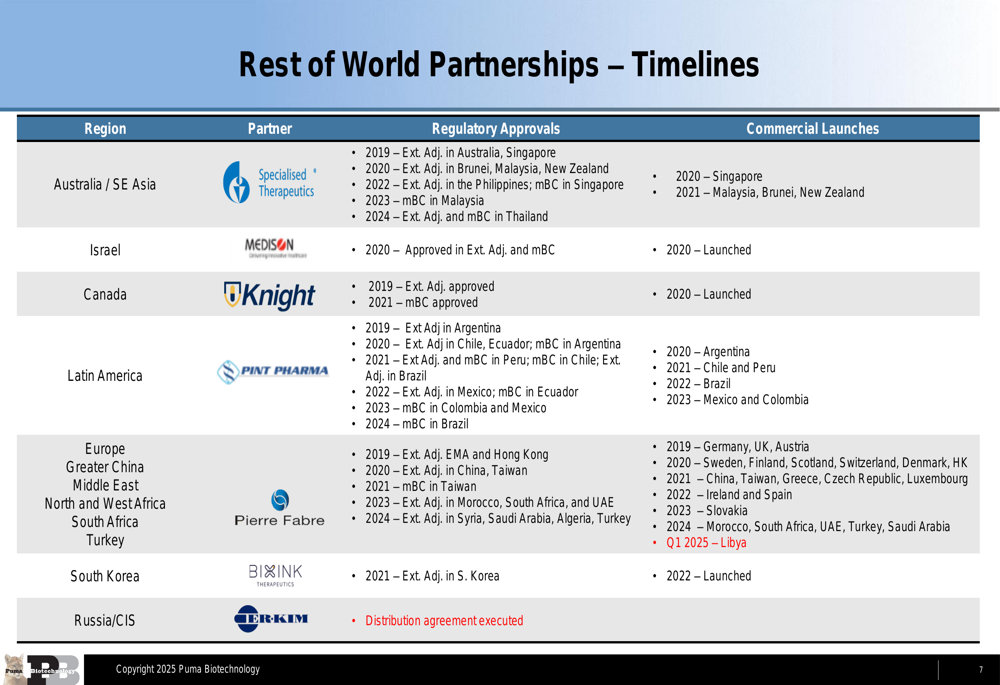
These partnerships represent a significant opportunity for revenue growth beyond the U.S. market, with regulatory approvals and commercial launches occurring across various regions between 2019 and 2024.
Distribution Network
Supporting both domestic and international sales, Puma has established a comprehensive distribution infrastructure. The company’s network includes specialty pharmacies such as Acaria Health, Accredo, and CVS, alongside specialty distributors including McKesson (NYSE:MCK) and Cardinal Health (NYSE:CAH). This network connects to various sites of care through Puma’s hub services program (PumaPatientlynx).
The following diagram illustrates Puma’s distribution ecosystem:
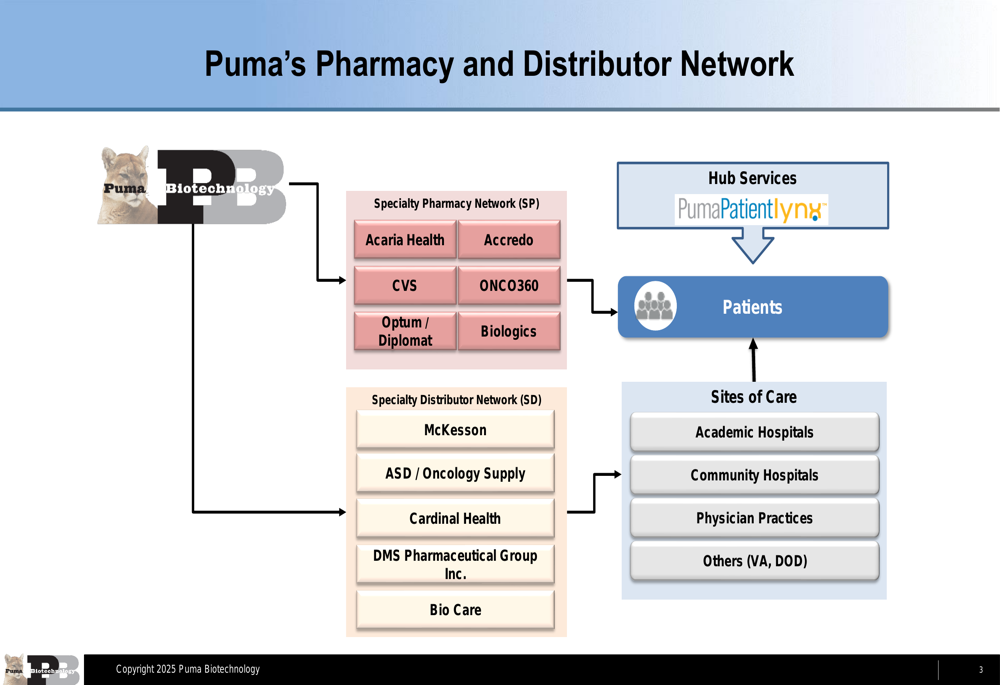
This infrastructure enables Puma to efficiently reach patients across academic hospitals, community hospitals, physician practices, and other healthcare settings, supporting the company’s commercial objectives.
Forward-Looking Statements
Looking ahead, Puma has provided guidance for Q2 2025 NERLYNX product revenue between $48 million and $50 million, with projected net income of $4 million to $6 million. For the full year 2025, the company anticipates NERLYNX product revenue between $192 million and $198 million.
The company faces several challenges, including the quarter-over-quarter decline in NERLYNX sales, competitive pressures from other oncology treatments, and potential delays in clinical trials or regulatory approvals. However, management remains optimistic about growth opportunities, citing promising early data on neratinib combination therapy, particularly in pancreatic cancer.
With a current stock price well below its 52-week high of $5.20, and analyst price targets ranging from $2 to $7, Puma’s future performance will likely depend on its ability to stabilize NERLYNX sales, successfully execute its global expansion strategy, and advance its product pipeline through ongoing trials and potential acquisitions.
Full presentation:
This article was generated with the support of AI and reviewed by an editor. For more information see our T&C.
